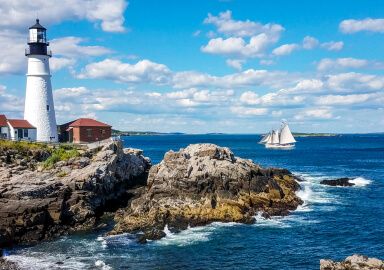Haddock
Haddock are a bottom loving fish of the cooler offshore areas of the northern Atlantic Ocean.
View 3 listings
3
listings
–
price starting from
1
countries
–
to the nearest trip
Where and When?
Haddock are a fish of the cooler areas of the northern Atlantic Ocean. There are populations on both sides of this ocean. The European population is found from Spitzbergen southwards to the Bay of Biscay, while on the eastern seaboard the haddock extend from Greenland to Cape Hatteras with concentrations around the Grand Banks and Cape Cod. They prefer fairly deep waters of 10 - 450 m. (33 - 1 500 ft.) and a temperature range of 4 - 10 degrees Centigrade (39 - 50 Degrees Fahrenheit). Smaller specimens may be found close inshore but, as each fish grows, there is a general movement offshore. They are usually found close to the bottom, regardless of the depth of water and can be found on sandy and gravel substrates. Haddock remain active and feeding throughout the year in all areas and so may be caught at any time. Most fishing is carried out in summertime but haddock is one of the few species that can be caught in numbers in winter. Daytime fishing is easier than after dark and, as very little light penetrates to the depths where this species is found, any suitable time can work for haddock.
About Haddock
Haddock (Melanogrammus aeglefinus) are a medium to large-sized, fairly typical looking, member of the cod (Gadidae) family. They vary in colour by region, but are generally darker, mostly brown, grey or nearly black, on their dorsal side and their bellies are lighter - usually a dull silvery white. Haddock also have a characteristic black “fingerprint” between the lateral line and pectoral fin. They have a large mouth with many small teeth at the front of the head and, unlike cod, their upper jaw protrudes slightly. The haddock can grow as big as 94 cm. (37 in.) and 11 kg. (24 lbs.), but most are caught in the 30 - 70 cm. (12-27.5 in.) range.
Males usually mature at 5 years and females at 4. A smallish female may lay about 55 000 eggs while a large female can lay well in excess of 1 million eggs annually. Spawning takes place in summer - mostly in June and July - in fairly deep waters. The main foods for small haddock are bottom dwelling invertebrates, and, as they grow, they eat a greater proportion of fish such as sand eels, herring and gobies. No large-scale migrations have been noted but, around Iceland, there are important and well-known local movements. While not generally a shoaling species, they do often hunt in shoals and spawning is also a group event.
How to Catch?
While haddock can be caught from the shore, mostly from cliffs and jetties, they favour deepish water, particularly as they grow larger. They usually live close to the bottom and so dead natural baits, such as squid, mussels and worms are usually best for shore fishing as it is difficult to get artificial baits and jigs out and then down to them. Boat fishing is usually the best approach and, down the western seaboard of the USA, there are many suitable charter operations and excellent skippers with knowledge of their areas and the fish. Off the European shore, although there are charter operations, most fishing is carried out by enthusiasts who have their own small boats or access to them.
Haddock often live in the same areas as cod and will take the same baits. Cod grow larger and are more enthusiastic about taking artificial baits, especially jigs, than haddock, but, with experience, each may be selectively targeted in the same place. Both species are unevenly distributed in any region and there are regular areas of greater abundance of each well known to local anglers. There are also areas where large specimens are more common and so, for haddock, discussions with local anglers can greatly improve your fishing returns.






